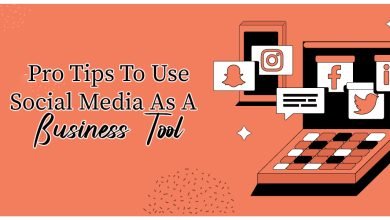The Importance of Website Usability and User Experience
In today’s digital age, a website is a crucial touchpoint between businesses and their target audience. To effectively engage and convert visitors, website usability and user experience (UX) play a pivotal role. This article will explore the significance of website usability and UX, highlighting their impact on customer satisfaction, conversion rates, and overall business success.
Creating a Positive First Impression
A website’s usability and UX significantly influence visitors’ initial impression of a business. A well-designed, intuitive, and visually appealing website instills trust and credibility. Positive first impressions are vital for establishing a strong brand identity and attracting potential customers.
Enhancing User Satisfaction
Website usability and UX directly impact user satisfaction. A user-centric design that focuses on simplicity, intuitive navigation, and clear communication ensures visitors can easily find the information they seek. Users who can effortlessly interact with a website and accomplish their goals are likelier to have a positive experience and develop trust in the brand.
Improving Conversion Rates
A seamless and user-friendly website experience directly correlates with improved conversion rates. By streamlining the path to conversion, reducing friction, and providing clear calls to action, businesses can optimize their website for higher conversion rates. Intuitive forms, simplified checkout processes, and persuasive design elements enhance the user journey and drive conversions.
Boosting Customer Engagement and Retention
A website with excellent usability and UX encourages visitors to explore and engage with the content, products, or services. Engaged customers are more likely to spend time on the website, interact with various elements, and return for repeat visits. Businesses can cultivate customer loyalty and foster long-term relationships by prioritizing usability and UX.
Enhancing Mobile Responsiveness
In the era of mobile devices, ensuring a seamless mobile experience is crucial. A mobile-responsive website design, intuitive navigation, and optimized content layout enable visitors to access and navigate the site easily on smartphones and tablets. Failing to provide a mobile-friendly experience can result in high bounce rates and missed business opportunities.
Facilitating Information Accessibility
Usability and UX are essential for organizing and presenting information in a digestible and accessible manner. Clear site architecture, intuitive menus, and efficient search functionality enable users to locate desired information quickly. When information is easily accessible, visitors are more likely to stay on the website, explore further, and make informed decisions.
Improving SEO Performance
Website usability and UX are intertwined with search engine optimization (SEO). Search engines prioritize websites that provide a positive user experience. Factors like page load speed, mobile-friendliness, and low bounce rates contribute to better rankings of search engines. A well-designed website that caters to user needs improves visibility and organic traffic potential.
Gaining Competitive Advantage
In today’s competitive digital landscape, businesses must differentiate themselves. Offering an exceptional user experience sets businesses apart from their competitors. When users find a website easy to navigate, visually appealing, and tailored to their needs, they are more likely to choose that business over competitors. Usability and UX become key factors in gaining a competitive advantage.
Driving Brand Advocacy
Positive website usability and UX can turn visitors into brand advocates. When users have an exceptional experience on a website, they are more inclined to share their positive experiences through word-of-mouth, social media, and online reviews. This user-generated content is valuable social proof, influencing others to engage with the brand.
Reducing Bounce Rates and Increasing Time-on-Site
A website with poor usability and bad user experience often leads to high bounce rates, where visitors leave the site quickly. Businesses can reduce bounce rates and increase website visitors’ time by focusing on usability and UX. Engaging design, easy navigation, and relevant content all contribute to keeping visitors engaged and exploring the site for longer durations.
Accessibility for All Users
Website usability and UX should prioritize accessibility to ensure inclusivity for users with disabilities or impairments. Implementing accessibility features such as alternative text for images, keyboard navigation, and proper color contrast enhances the experience for all users, regardless of their abilities. By making the website accessible, businesses demonstrate their commitment to diversity and inclusivity.
Streamlining Customer Support and FAQs
Effective website usability and UX can address customer support needs. By providing easily accessible FAQs, self-help resources, and intuitive contact options, businesses can empower users to find answers to their questions without extensive support interactions. It saves customers and supports teams’ time, leading to more efficient customer service.
Aiding Decision-Making with Reviews and Testimonials
Including user reviews and testimonials on a website enhances its usability and UX. Positive customer feedback instills trust and helps prospective customers make informed decisions. Displaying authentic reviews and testimonials strategically throughout the website supports the user’s decision-making process and encourages conversions.
Performance Optimization for Speed and Reliability
Website usability and UX are closely tied to performance optimization. Slow-loading pages and frequent downtime can significantly impact the user experience. Optimizing website performance through caching, image compression, and reliable hosting ensures fast loading times and seamless user interactions, improving satisfaction and engagement.
Iterative Improvements Based on User Feedback
Collecting user feedback and analyzing user behavior provides valuable insights for enhancing website usability and UX. Implementing feedback mechanisms, conducting user surveys, and analyzing website analytics can help identify pain points and areas for improvement. Regularly iterate and refine the website based on user feedback to enhance the user experience continuously.
Alignment with Brand Values and Personality
Website usability and UX should align with the brand’s values and personality. Consistent branding elements, such as color schemes, typography, and tone of voice, establish a coherent brand identity across the website. This cohesive experience reinforces the brand’s messaging and strengthens its connection with its target audience.
Adapting to Evolving User Expectations
User expectations for website usability and UX are constantly evolving. Businesses must adapt and evolve their website design and functionality to stay ahead. Staying updated with the latest design trends, incorporating new technologies, and conducting user research help businesses meet evolving user expectations and remain competitive.
Continuous Testing and Optimization
Usability and UX should be an ongoing focus for businesses. Regularly testing website elements, such as navigation, forms, and calls-to-action, allows for identifying areas of improvement. A/B testing, heatmaps, and user session recordings provide insights into user behavior, enabling businesses to optimize the website iteratively and ensure it remains user-centric.
Conclusion
Website usability and user experience are critical elements that directly impact a business’s success in the digital landscape. Businesses can create websites that captivate visitors, enhance satisfaction, and drive conversions by prioritizing a user-centric approach. A well-designed and intuitive website improves brand perception and fosters customer loyalty and advocacy. Investing in website usability and UX is an investment in delivering a superior online experience, gaining a competitive edge, and achieving long-term business growth.





